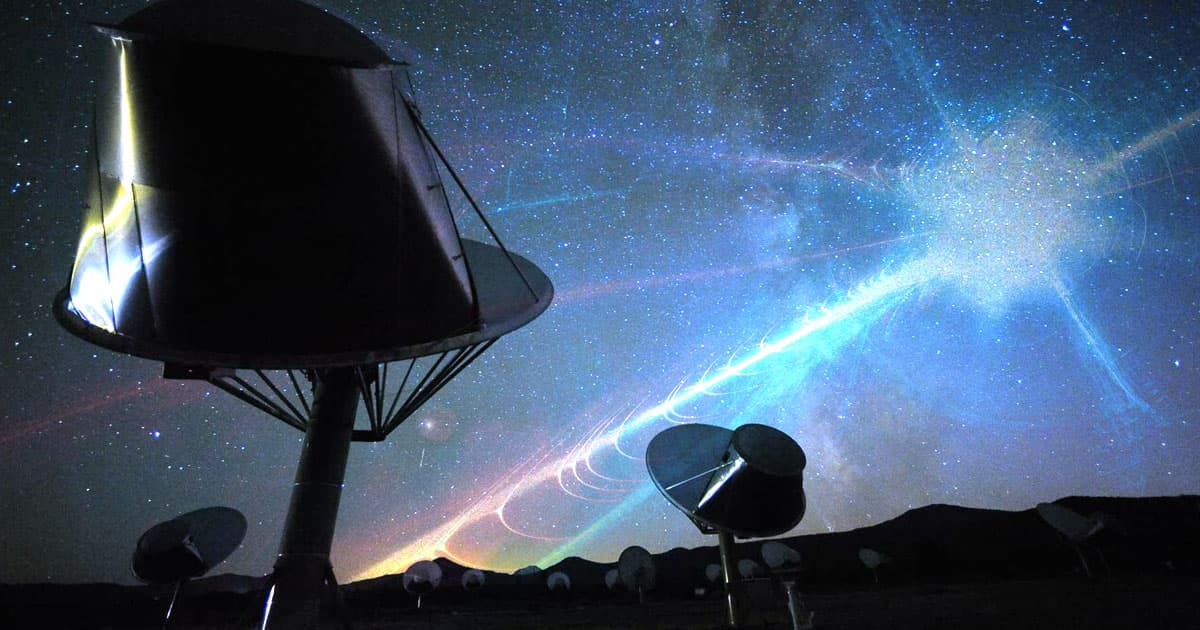This latest detection is a real head scratcher.
Blipped Out
Ever since the first fast radio burst was discovered in 2007, scientists have been racing to understand the unusual flashes of radio waves emanating from extremely distant locations.
Some of these signals blip at astonishingly regular intervals, while some blast out extremely powerful flashes all at once, lighting up ground-based radio dishes like a Christmas tree for mere milliseconds.
Some FRBs emit as much energy in a fraction of a second as the Sun does in a few days. One signal that astonished astronomers earlier this year had been pulsing every 20 minutes since at least 1988.
And while scientists can still only hazard a guess as to what's behind them, the latest fast radio burst that was just discovered is only adding to the mystery — and highlighting just how much we still have to learn about the celestial phenomenon.
Ready SETI Go
As detailed in a new study published in the Monthly Notices of the Royal Astronomical Society this week, researchers spotted a "never-before-seen" burst dubbed FRB 20220912A using the SETI Institute's Allen Telescope Array, a collection of 42 antennae stretching out across the Cascade Mountains in California.
Over two months, the team detected 35 bursts from a single source. Unlike previous FRBs that repeated over time, the team noticed that the signal dropped in the center frequency of the bursts, kind of like a "celestial slide whistle," as CNN put it.
Despite their best efforts, the team wasn't able to detect a regular timing between each of the bursts.
Strange as that is, the findings could still help scientists get a better sense of where to look for more signals like it.
"This work is exciting because it provides both confirmation of known FRB properties and the discovery of some new ones," said SETI Institute researcher and lead study author Sofia Sheikh in a statement.
Scientists are still hunting for a source behind these FRBs. One popular theory that some have since put forth is that these signals could be released by the extremely magnetized remains of a collapsed star that might be emitting these radio waves like a cosmic lighthouse.
"We’re narrowing down the source of FRBs, for example, to extreme objects such as magnetars, but no existing model can explain all of the properties that have been observed so far," Sheikh added.
More on FRBs: Scientists Intercept Signal That Took 8 Billion Years to Reach Earth
Share This Article
